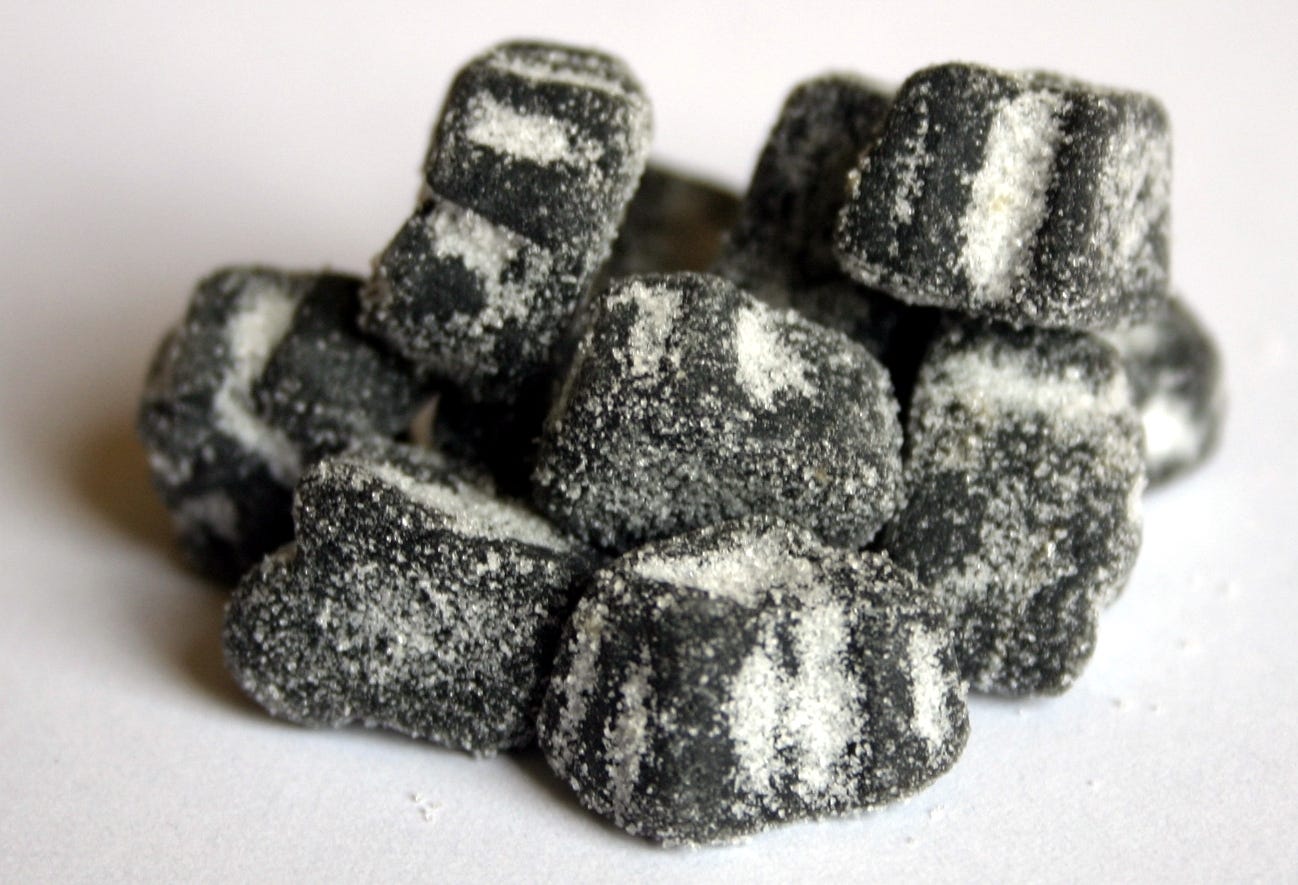Genetic Mutation Underlying Finland’s “Salty Liquorice” Cats Identified
The genetic basis for a distinctive new coat coloring — known as “salmiak” — has been identified in domestic cats in Finland.
Swedish salty liquorice "Djungelvrål" (in English: roar of the jungle). (Credit: Marcin Floryan / CC BY-SA 2.5)
Oh, this is fun: a collaboration of scientists at the University of Helsinki and at the company Wisdom Panel, have identified the genetic mutation responsible for a new, distinctive coat color pattern that arose recently in domestic cats in Finland. Originally known as “the Finnish mutation” when it was first spotted in 2007, this coat color is found in just a single feral cat population that is characterised by their black-and-white “tuxedo” coat coloring. But this new coat color pattern is unique because the fur is colored only near the base, and becomes progressively whiter along its length. These cats also have white tail tips.
This color pattern was named “salmiak” after the variety of salty liquorice that is popular in Finland.
Keep reading with a 7-day free trial
Subscribe to Words About Birds to keep reading this post and get 7 days of free access to the full post archives.




